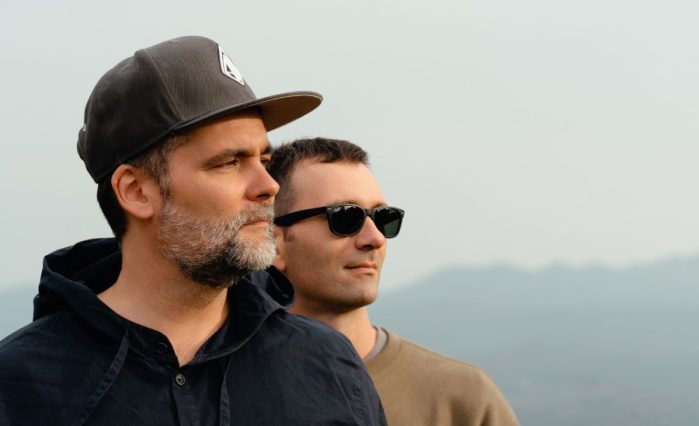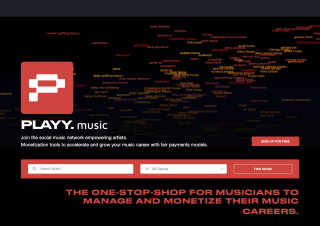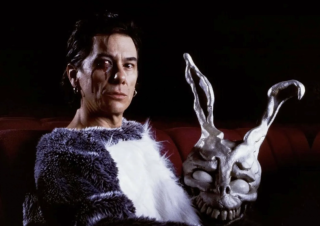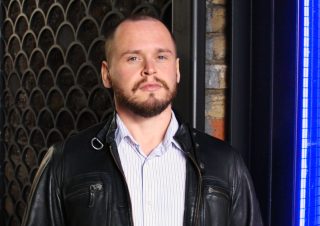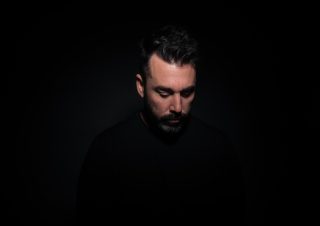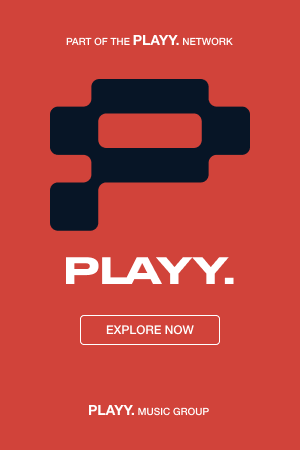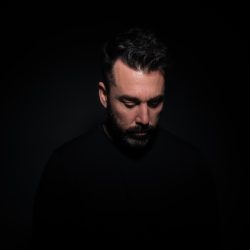We caught up with Spanish duo Deeplomat & Dublatov, who are analog music experts and producer extraordinaire’s. The pair are renowned for their independent spirit, dynamism and inventive approach to their craft with their releases spanning a range of genres such as techno, synth disco and left-field house. They recently released the highly anticipated second single ‘Ambidextro’ from their forthcoming album set for release this year. The track immaculately draws inspiration from the likes of Eric B & Rakim and Coldcut, while merging elements of Breakbeat, IDM and House.
In the interview, Deeplomat & Dublatov share their current hardware setup, their biggest influences and what inspires the outside of music.
Stream ‘Ambidextro’ while reading the interview below:
Describe a pivotal music moment for you in your favourite film, television show, brand partnership etc. Has this influenced any of your own compositions?
Dublatov (Rost):
If I look back to my childhood, I was strongly influenced by the Soviet animated film The Secret of the Third Planet. It featured unusual electronic music that, at the time, seemed very cosmic. Later, as an adult, I was impressed by the film American Beauty. In one scene, a bag floats in the wind, accompanied by a beautiful piano theme. Such minimalism deeply moved me, and since then I’ve paid more attention to the idea that sometimes it’s better to leave space and not overload a track with details.
Deeplomat (Max):
Yes, The Secret of the Third Planet is also an iconic piece for me. I still love those cosmic, “futuristic” sounds that we partially use in our music. Interestingly, back then composers didn’t have powerful synthesizers or digital technology, yet they still created an atmosphere of space. This inspires the search for unusual timbres in today’s conditions.
What does your current software/hardware setup currently consist of?
Deeplomat (Max):
We have a “hardware” setup. I use a sampler, a drum machine, a synthesizer, and occasionally electronic percussion. For post-production we use Ableton, various plugins (including ones from Plugin Alliance), but the core is truly the hardware instruments.
Dublatov (Rost):
We have several synthesizers from brands like Elektron and Dave Smith, plus a personalized set of modules (Make Noise, Intellijel, etc.). One of the key devices is the Cirklon sequencer, which helps create complex rhythms and melodic patterns. All of this together gives us the flexibility and the ability to improvise both in the studio and on stage.
Who are your biggest influences, both inside and outside of the genre?
Deeplomat (Max):
For a long time we didn’t really understand what genre we were working in until someone told us that it resembles leftfield house/techno. At the same time, we listen to a very wide variety of music. I’m interested in ethnic, African, and Eastern rhythms, so I often “borrow” something from them for my parts. We really don’t have strict genre boundaries—we can use anything that “clicks.”
Dublatov (Rost):
For example, I can go through periods where I listen to classical, hip-hop, or bluegrass. I’m inspired by minimalist composers like Philip Glass, and when it comes to electronic music, everything from British drum ‘n’ bass to Detroit techno. One of my constant benchmarks for musical progress has always been Warp Records (Autechre, Boards of Canada).
Outside of music, what art forms or experiences inspire you the most? Are you pulling from sci‑fi films, old video games, cityscapes at night?
Dublatov (Rost):
Anything can be inspiring – from a beautiful landscape to an interesting book. When you read science fiction or watch arthouse films, new images and ideas emerge.
Deeplomat (Max):
Yes, the key is that there’s emotion. Sometimes it’s nature, where you turn off your phone and simply gaze at the mountains or the sea. Sometimes it’s unique architecture or the light of a city at night. Any visual or literary art form can spark an idea for a track. Or, for example, a walk along the waterfront, where there are no people and no city noise, helps to “clear your head” and return to the studio with new thoughts.
When you sit down to create, what’s the first thing that sparks the process? A melody? A feeling? A memory?
Dublatov (Rost):
Most often it’s a sound or tone that “hooks” you. In our duo, sometimes I find an interesting synthesizer part, exclaim “this is cool!”, and we build a track around it. Initially, it happens on an intuitive level, without words—it’s important to feel that this riff or pattern “must live.”
Deeplomat (Max):
Sometimes it can be a loop or sample—a snippet you happen to catch. Sometimes I just come in after a hard day and sit down at the instruments, “turn off my brain,” and let my hands take over. From such spontaneous sessions, sometimes the most interesting pieces are born.
Do you have any personal rituals or habits when writing or producing, things that get you in the right headspace? (e.g., late‑night drives, dim lighting, a specific synth always within reach)
Dublatov (Rost):
We always start with a cup of tea. It’s already a ritual—to sit down, have a calm conversation, and get in the right mindset. If we work for a long time, we go out onto the terrace, simply gaze into the distance, and take a break from the sounds. Then we return to the studio with a refreshed perspective.
Deeplomat (Max):
Tea and conversations—that’s important. Our music is born in an atmosphere of lightness and friendship. If we feel that it’s “not working,” it’s better to switch to something else. We don’t have any rigid rituals like “I turn on strict red light”; everything is more organic.
Please suggest an album for us to listen to?
Dublatov (Rost):
Our forthcoming album, Ambidextrous, and we also have the previous one, DreamDome. If you want to understand our musical trajectory, you can start with the second album and then go back to the first to compare how we’ve evolved.
Deeplomat (Max):
Or vice versa: start with DreamDome, and then listen to Ambidextrous. That way, it will be more interesting to see what experiments we conducted and how we arrived at a more structured, yet “live” sound.
Looking ahead, what’s next? A new album? A shift in sound? Something totally unexpected?
Deeplomat (Max):
We already have some work in progress: we’re trying a new approach where we exchange sketches remotely and then quickly gather in the studio to test the ideas live. In style, it might be a step forward from Ambidextrous; we already feel that we’re moving into new rhythms and textures.
Dublatov (Rost):
Yes, there’s always the possibility that it will be an EP or a series of remixes. We’ve already accumulated remixes that haven’t been officially released. Plus, if we find a fresh idea, we might record another album. We’re quite free in our choice of format.
If you could collaborate with anyone, from any era or genre, who would it be and what would that track sound like?
Dublatov (Rost):
Sebastian Bach comes to mind. Imagine a composer from the Baroque era—who had never seen electricity—composing a fugue, while we mix in rhythms and synthesizers. It would turn out to be an unusual hybrid—Baroque techno.
Deeplomat (Max):
I would choose the composers of the music for The Secret of the Third Planet—with them, despite very simple means, they created a very cosmic melody. I can imagine us adding modern modular synthesizers and breakbeat rhythms to their parts. It would be a kind of “retro‑futurism” filled with audiovisual magic.
Follow Deeplomat & Dublatov:
Website – SoundCloud – Instagram – Facebook – Bandcamp – YouTube

